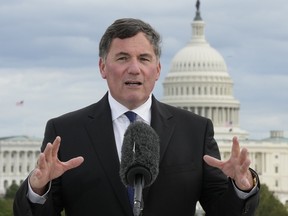Politics
Trump’s Factory Revival Plan Faces Critical Challenges Ahead

U.S. President Donald Trump’s ambitious plan to revive American manufacturing is facing significant hurdles, as economic realities challenge the feasibility of his proposals. According to noted Canadian economist Dr. Roslyn Kunin, the combination of shifting policies, worker shortages, and rising costs is undermining efforts to create the factory boom Trump promised.
The expectation that tariffs would stimulate domestic manufacturing and create jobs is increasingly questioned. In theory, imposing tariffs on imports should lead to increased domestic production. However, Dr. Kunin argues that the reality of building a robust industrial base is far more complex and time-consuming than Trump’s administration acknowledges. Major construction projects in the U.S. frequently encounter delays, with the Los Angeles to San Diego rail line serving as a prominent example. Initially slated for completion in 2020, the timeline has now been pushed to 2030 due to various challenges.
One significant issue is productivity in the construction sector, which has lagged behind other industries. Since 2000, overall private sector productivity has increased by 54 percent, while construction productivity has only seen a rise of 8 percent. This sluggish growth can be attributed to a fragmented industry largely composed of small contractors who lack the capital for modernization.
Even if new factories could be established at a quicker pace, they would require substantial financial investment. The current unpredictability of Trump’s policies discourages potential investors who are hesitant to allocate billions into facilities that may become obsolete under future administrations. This uncertainty is particularly detrimental to sectors that depend on long-term planning, such as automobile manufacturing and high-tech production.
The labour shortage further complicates matters. The U.S. is experiencing a lack of both skilled tradespeople and basic construction workers. Many Americans are unwilling to take on these roles, despite rising unemployment rates. Historically, migrant workers—often undocumented—have filled this gap in construction and manufacturing. Trump’s administration has sought to limit immigration, intensifying the existing worker shortage and making it increasingly unlikely that new factories will materialize.
This situation resonates across the border in Canada, where industries face similar shortages of skilled labour. The impact of U.S. policies is not confined to its borders; approximately 75 percent of Canada’s exports are directed to the United States. As a result, Canadian industries supplying parts, raw materials, and finished goods are also beginning to feel the strain. Supply shortages are already evident, with beer producers facing rising aluminum costs for cans and car prices climbing due to increased demand for construction materials.
The economic repercussions are palpable, with consumers in both countries experiencing higher prices. Grocers warn that food costs may rise further if packaging and transportation expenses continue to escalate. The interconnectedness of the U.S. and Canadian economies means that when one falters, the other often suffers as well.
Developing the infrastructure necessary to replace imports will take years, demanding the convergence of capital, labour, raw materials, and a stable regulatory environment. Yet, Trump’s policies have undermined these critical components. As a result, unemployment is creeping higher, promised jobs remain elusive, and both Americans and Canadians are bearing the brunt of increased costs and diminished economic growth.
Without significant policy changes, the gap between Trump’s promises and the stark realities facing both economies is likely to widen, leaving them in a more precarious position than before. The challenges ahead are formidable, and the potential for a manufacturing revival appears increasingly remote.
-

 World3 months ago
World3 months agoScientists Unearth Ancient Antarctic Ice to Unlock Climate Secrets
-

 Entertainment3 months ago
Entertainment3 months agoTrump and McCormick to Announce $70 Billion Energy Investments
-

 Lifestyle3 months ago
Lifestyle3 months agoTransLink Launches Food Truck Program to Boost Revenue in Vancouver
-

 Science3 months ago
Science3 months agoFour Astronauts Return to Earth After International Space Station Mission
-

 Technology2 months ago
Technology2 months agoApple Notes Enhances Functionality with Markdown Support in macOS 26
-

 Top Stories1 week ago
Top Stories1 week agoUrgent Update: Fatal Crash on Highway 99 Claims Life of Pitt Meadows Man
-

 Sports3 months ago
Sports3 months agoSearch Underway for Missing Hunter Amid Hokkaido Bear Emergency
-

 Politics2 months ago
Politics2 months agoUkrainian Tennis Star Elina Svitolina Faces Death Threats Online
-

 Technology3 months ago
Technology3 months agoFrosthaven Launches Early Access on July 31, 2025
-

 Politics3 months ago
Politics3 months agoCarney Engages First Nations Leaders at Development Law Summit
-

 Entertainment3 months ago
Entertainment3 months agoCalgary Theatre Troupe Revives Magic at Winnipeg Fringe Festival
-

 Politics1 week ago
Politics1 week agoShutdown Reflects Democratic Struggles Amid Economic Concerns




















